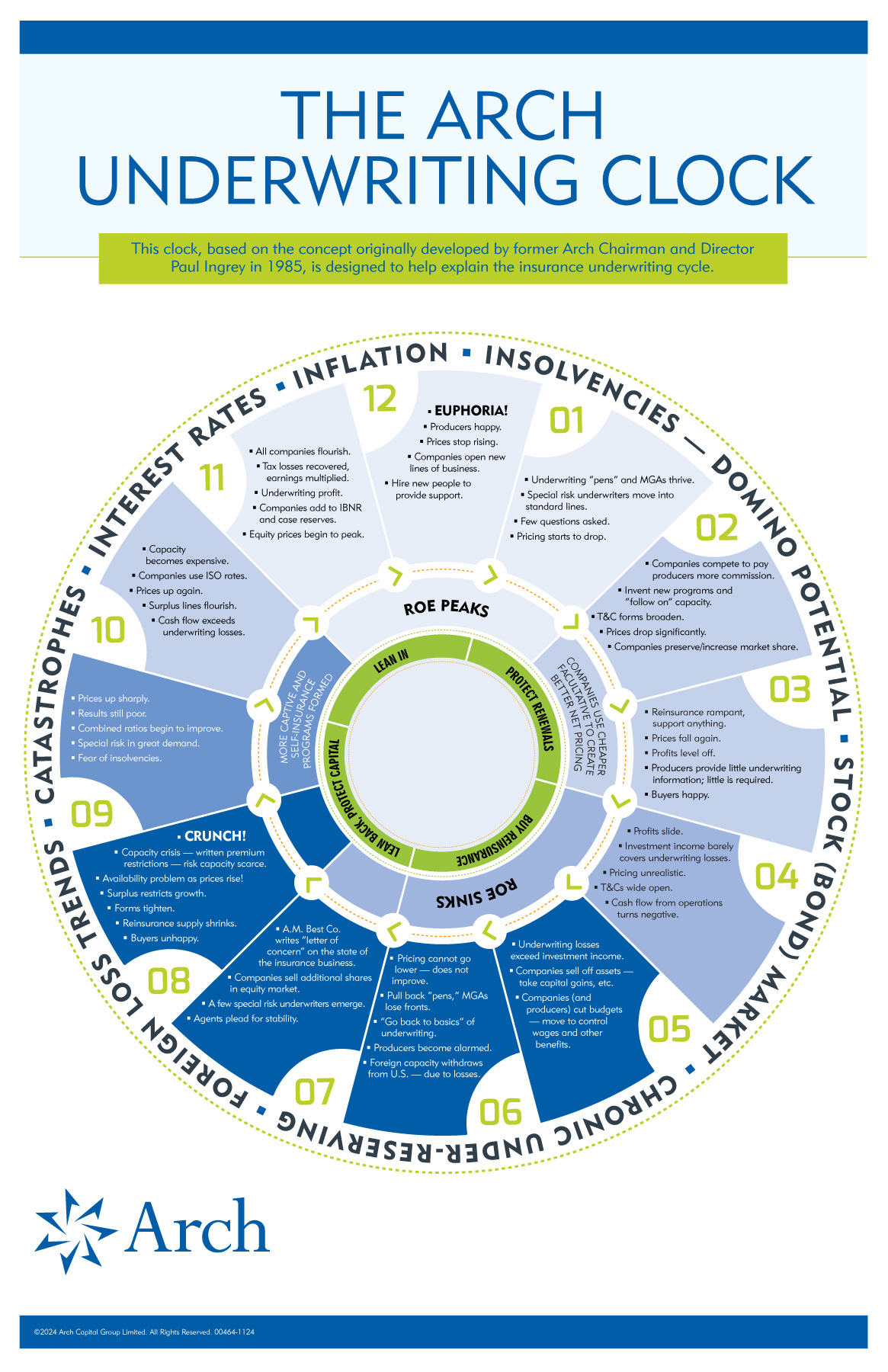This clock, based on the concept originally developed by former Arch Chairman and Director Paul Ingrey in 1985, is designed to help explain the insurance underwriting cycle.
[Around the outside of the round clock, beginning at the top:]
Variables:
- Insolvencies—Domino potential
- Stock (Bond) market
- Chronic Under-reserving
- Foreign loss trends
- Catastrophes
- Interest rates
- Inflation
[Arranged as numbers on a clock:]
12
- EUPHORIA!
- Producers happy.
- Prices stop rising.
- Companies open new lines of business.
- Hire new people to provide support.
01
- Underwriting “pens” and MGAs thrive.
- Special risk underwriters move into standard lines.
- Few questions asked.
- Pricing starts to drop.
02
- Companies compete to pay producers more commission.
- Invent new programs and “follow on” capacity.
- T&C forms broaden.
- Prices drop significantly.
- Companies preserve/increase market share.
03
- Reinsurance rampant, support anything
- Prices fall again.
- Profits level off.
- Producers provide little underwriting information; little is required.
- Buyers happy.
04
- Profits slide.
- Investment income barely covers underwriting losses.
- Pricing unrealistic.
- T&Cs wide open.
- Cash flow from operations turns negative.
05
- Underwriting losses exceed investment income.
- Companies sell off assets—take capital gains, etc.
- Companies (and producers) cut budgets—move to control wages and other benefits.
06
- Pricing cannot go lower—does not improve.
- Pull back “pens,” MGAs lose fronts.
- “Go back to basics” of underwriting.
- Producers become alarmed.
- Foreign capacity withdraws from U.S.—due to losses.
07
- A.M. Best Co. writes “letter of concern” on the state of the insurance business.
- Companies sell additional shares in equity market.
- A few special risk underwriters emerge.
- Agents plead for stability.
08
- CRUNCH!
- Capacity crisis—written premium restrictions—risk capacity scarce.
- Availability problem as prices rise!
- Surplus restricts growth.
- Forms tighten.
- Reinsurance supply shrinks.
- Buyers unhappy.
09
- Prices up sharply.
- Results still poor.
- Combined ratios begin to improve.
- Special risk in great demand.
- Fear of insolvencies.
10
- Capacity becomes expensive.
- Companies use ISO rates.
- Prices up again.
- Surplus lines flourish.
- Cash flow exceeds underwriting losses.
11
- All companies flourish.
- Tax losses recovered, earnings multiplied.
- Underwriting profit.
- Companies add to IBNR and case reserves.
- Equity prices begin to peak.
[Inside the circle, toward its center and beginning at the top:]
- ROE Peaks
- Companies use cheaper facultative to create better net pricing.
- ROE Sinks.
- More Captive and self-insurance programs formed.
